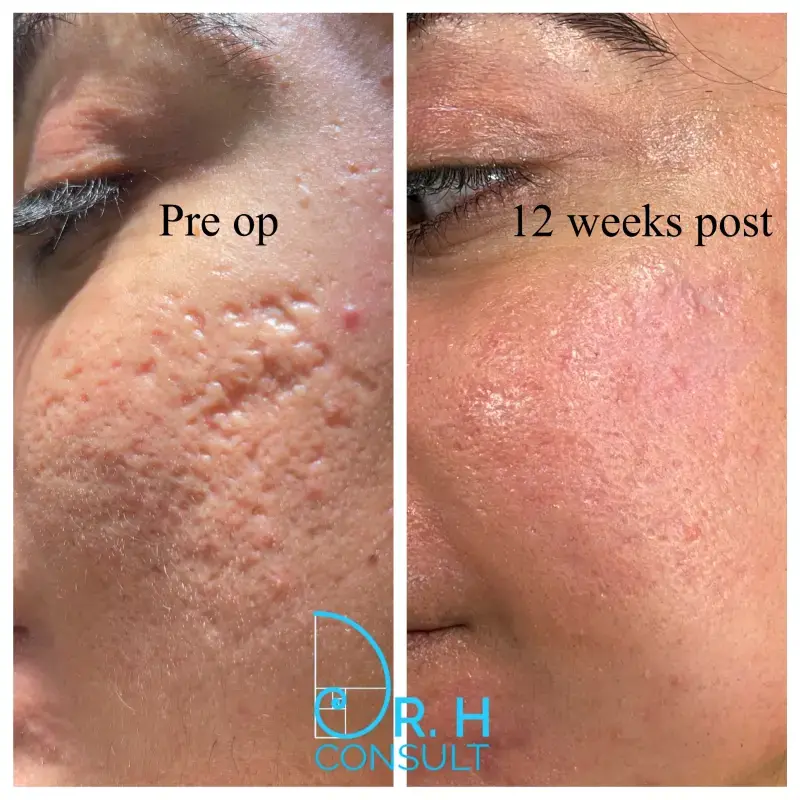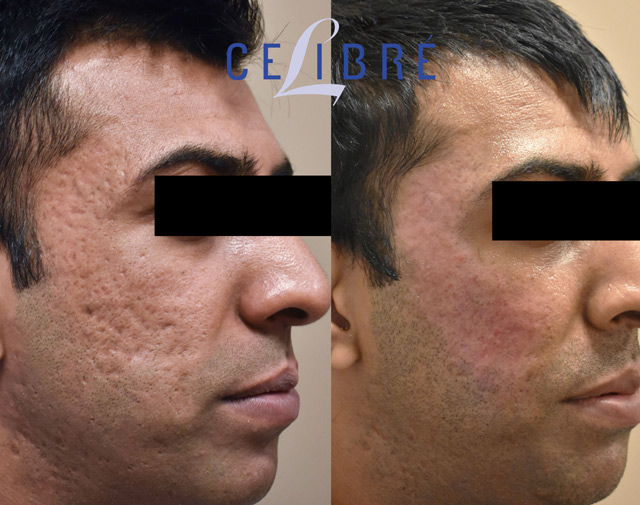Discovering Skin Disease: Recognizing and Dealing With Acne Scars for Healthier Skin
Acne marks represent a considerable concern for people seeking to maintain healthy and balanced skin, as they can influence both appearance and self-confidence. Understanding the numerous kinds of scars, from atrophic to hypertrophic, is important for determining appropriate therapy choices. While professional treatments like chemical peels and microneedling can be efficient, the importance of customized care strategies can not be overstated. Preventative procedures play an important role in lessening future scarring. As we explore these elements, one should consider exactly how the best strategy can lead to transformative results.
Recognizing Acne Marks
Recognizing acne scars is important for any person who has actually experienced extreme acne, as these marks can have an enduring influence on both physical appearance and psychological wellness. When the skin undergoes inflammatory reactions during active acne lesions, acne marks create. The extent of scarring is frequently influenced by aspects such as the kind of acne, its duration, and private skin attributes.
The body's all-natural recovery procedure can cause either atrophic marks, which look like depressions in the skin, or hypertrophic scars, which are raised and result from overproduction of collagen. Furthermore, the psychological toll of acne scars ought to not be ignored; lots of people report feelings of humiliation, stress and anxiety, and decreased self-esteem. This psychological burden can affect social interactions and total lifestyle.
Addressing acne marks calls for a thorough understanding of their development and influence. Understanding of the potential for long-term consequences related to unattended marks can inspire individuals to look for proper therapies. Early intervention and effective monitoring approaches can dramatically enhance skin look and enhance psychological strength, highlighting the significance of understanding the intricacies bordering acne scars.
Sorts Of Acne Marks
Acne scars can be classified into distinctive kinds, each exhibiting one-of-a-kind features and needing specific therapy techniques. The main sorts of acne marks include atrophic, hypertrophic, and keloid marks.

Hypertrophic scars, on the other hand, are raised over the skin degree and are the result of extreme collagen manufacturing during the recovery process. They typically continue to be within the borders of the original acne sore. Keloid marks are similar yet expand beyond the original injury site, creating bigger, raised areas that can be itchy or uncomfortable.
Recognizing these sorts of scars is essential for selecting suitable therapy choices. Various scars may respond much better to particular treatments, such as laser treatments, fillers, or medical treatments, highlighting the importance of a tailored method to acne mark management.
Determining Your Scars
When evaluating the appearance of your skin, it is important to precisely recognize the type of scars existing, as this will inform one of the most effective therapy method. Acne marks usually fall under two groups: atrophic and hypertrophic marks. Atrophic scars, which are the most usual, show up as clinical depressions or imprints on the skin. These can even more be categorized right into ice-pick scars, boxcar scars, and rolling marks, each displaying distinct characteristics and calling for various strategies for evaluation.
Hypertrophic scars, on the other hand, are elevated and happen because of too much collagen manufacturing throughout the recovery process. Recognizing the particular attributes of your scars-- such as texture, deepness, and size-- is essential for appropriate recognition. Additionally, think about the circulation of scars throughout your skin, as this can show the extent and duration of the acne condition.
Involving with a dermatologist can supply valuable understandings into the nature of your marks, assisting in the differentiation between numerous kinds. A complete understanding of your scars will ultimately cause an extra tailored and efficient therapy strategy, ensuring a clearer and healthier skin tone.
Therapy Alternatives Available
Determining the certain sort of acne marks existing on your skin prepares for exploring efficient treatment choices. Usual kinds of acne marks include atrophic (depressed), hypertrophic (increased), and post-inflammatory erythema.
For atrophic marks, alternatives such as chemical peels, microneedling, and laser resurfacing are commonly made use of. Chemical peels off make use of acids to get rid of the external layer of skin, advertising brand-new cell development. Microneedling entails tiny needles that create micro-injuries, stimulating collagen production. Laser resurfacing targets harmed skin cells, boosting appearance and tone.
Hypertrophic scars can be treated with corticosteroid injections to flatten the mark or laser treatment to minimize inflammation and enhance look. skin rejuvenation treatments. Silicone gel sheets and stress dressings might likewise help in managing raised scars
Furthermore, facial fillers can briefly complete anxieties from atrophic scars, while surgical excision may be appropriate for serious instances. Each therapy option has its considerations and benefits, making it necessary to consult with a skin doctor. They can provide individualized suggestions based on the kind and intensity of your scars, along with your skin type and overall wellness.
Tips for Avoidance
Efficient avoidance methods can substantially reduce the chance of establishing acne learn the facts here now scars. The first action is to Visit This Link maintain a consistent skin care routine that consists of gentle cleaning, exfoliation, and hydrating. Using non-comedogenic items helps protect against stopped up pores, which can intensify acne. In addition, incorporating topical therapies including salicylic acid or benzoyl peroxide can properly handle outbreaks and reduce inflammation.
Avoiding need to select or stand out acne sores is essential, as this can bring about much deeper skin damage and enhance the danger of scarring. Rather, take into consideration using a chilly compress or non-prescription treatments to decrease swelling and inflammation.
Sunlight security is an additional important element of prevention; ultraviolet (UV) rays can dim scars and prevent the healing process. Using a broad-spectrum sunscreen with a minimum of SPF 30 daily can safeguard the skin and advertise also recovery.
Finally, keeping a balanced diet regimen rich in antioxidants, vitamins, and minerals supports skin wellness and healing. Remaining hydrated and taking care of tension degrees can also play a considerable role in minimizing acne flare-ups. By implementing these methods, individuals can substantially decrease their possibilities of establishing acne marks.

Final Thought
To conclude, understanding and click recognizing acne marks is essential for effective treatment and accomplishing healthier skin. Different types of acne scars, including atrophic and hypertrophic scars, require certain treatments customized to private requirements. Treatment choices variety from chemical peels and microneedling to corticosteroid injections, emphasizing the significance of seeking advice from a skin specialist. Furthermore, embracing a gentle skincare regimen and shielding the skin from UV direct exposure can dramatically add to the avoidance of additional scarring and overall skin health.
The body's natural healing procedure can result in either atrophic marks, which appear as clinical depressions in the skin, or hypertrophic marks, which are raised and result from overflow of collagen. They are additional divided right into three subtypes: ice choice marks, boxcar scars, and rolling marks. Acne scars usually drop into 2 groups: atrophic and hypertrophic scars. These can even more be classified right into ice-pick marks, boxcar scars, and rolling marks, each exhibiting distinctive qualities and needing different strategies for evaluation.
Various types of acne scars, consisting of atrophic and hypertrophic marks, require certain treatments tailored to individual requirements.